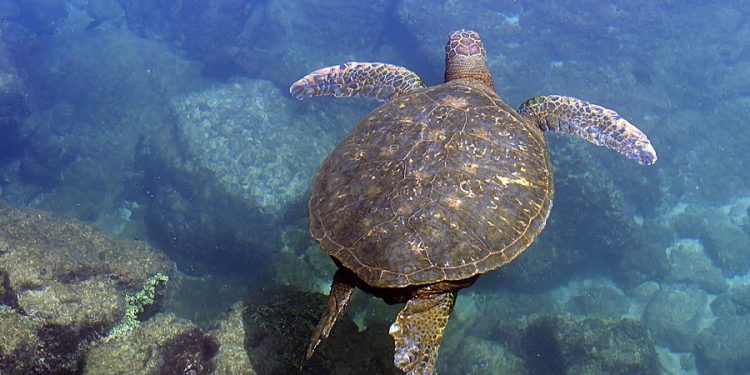Sea Turtles land on Mexico’s beaches every year to lay eggs in the sand.
Although human poachers (in addition to natural predators) have been a threat to the survival of the turtles, Mexico runs a number of programs to protect these remarkable testudines and there’s also an opportunity to see the turtles during the breeding season…
Sea Turtle Conservation Projects
Places to Watch Sea Turtles or Take Part in Conservation
Sea Turtle Case Study
Conservation Projects – Contacts
Sea Turtles in Mexico
Sea Turtles are found in all of the world’s oceans, with exception of the arctic. There are seven species of Sea Turtle, and six of these arrive to lay eggs each year on beaches across Mexico.
Although Sea Turtles live most of their lives at sea (and mate at sea) the females must return to land to lay their eggs. One of the wonderful (and mysterious) aspects of these beautiful creatures is that the females return to the precise location where they themselves were born to lay their own eggs. It is thought that they are sensitive to, and use, the Earth’s magnetic field as a means of navigation.
A sea turtle’s nest may contain up to 200 eggs. The female will bury her “clutch” of eggs in the sand, where they will incubate for around fifty days before the eggs hatch, and the baby turtles make the often perilous journey from the beach to the ocean.
In addition to natural predators, to whom the baby turtles are easy prey as they scurry slowly along the beach from their birth nest to the water, Sea Turtles are also endangered by Man: people who would steal the eggs and baby turtles for profit as both fetch high prices on the black market.
We implore everybody visiting Mexico to desist from purchasing turtle eggs, turtle meat and any other products deriving from sea turtles.
[Menu]
Sea Turtle Conservation Projects in Mexico
Mexico runs a number of key conservation projects, whereby marine biologists and government agencies work in unison to protect Sea Turtles – an endangered species world-wide – from natural predators and unscrupulous humans.
During the egg-laying season, which runs from June to November each year, a number of initiatives take place on popular stretches of beach where turtles are known to return and lay eggs. These include:
- Federal and local police are dispatched to the areas to stand guard and protect the eggs from human poachers during the day and keep humans away from the nesting areas at night;
- Local volunteers support the police effort to prevent poaching;
- Local volunteer groups manage conservation projects to protect the eggs and return baby turtles safely to the sea. Once back in the water, they are less susceptible to predators as they are more agile in the water than they are on land.
[Menu]
Places to Watch Sea Turtles or Take Part in Conservation Projects
Most of the protected areas are open to the public for viewing during daylight hours. There are also a number of conservation projects taking place. If you would like to take part in one of these, contact one of the organizers using the ‘contacts’ links at the foot of this guide.
Locations in Mexico to Watch Sea Turtles
Sea turtles land on the beaches between June and November each year.
Pacific Coast
- Mazatlan (see Case Study, below)
- Costalegre
- Puerto Vallarta
- Manzanillo
- Oaxaca
Baja California Sur
- San Jose del Cabo
- Cabo San Lucas
Yucatan Coast
- Akumal
- Rio Lagartos
[Menu]
Case Study
One of the country’s principal conservation projects is situated at Estrella del Mar (EDM), a golf resort and luxury realty development situated some twenty miles south of Mazatlan, on a secluded beach where Olive Ridley and Leatherback sea turtles arrive to lay eggs every year.
Between July and December, the females arrive to lay their eggs. As they are laid, the preservation team based at the EDM Turtle Reserve monitors the beach and carefully collects eggs from sand nests to place them into a special incubator unit situated at the reserve. Last year, the work led by Erendira Gonzalez Diego, a marine biologist working full-time at the reserve, collected 1,326 nests containing 125,263 eggs of which 83,866 hatched and were successfully returned to the sea; a survival rate of 68%.
The females will return to Mexico to lay their eggs each summer, beginning in July. Endira and her team of volunteers will be there, monitoring and working across seventeen kilometers (eleven miles) of beach area, awaiting the turtle arrivals and to extend their valuable preservation work throughout the laying season.
[Menu]
Sea Turtle Preservation Projects – Contacts
Mexico in your inbox
Our free newsletter about Mexico brings you a monthly round-up of recently published stories and opportunities, as well as gems from our archives.

